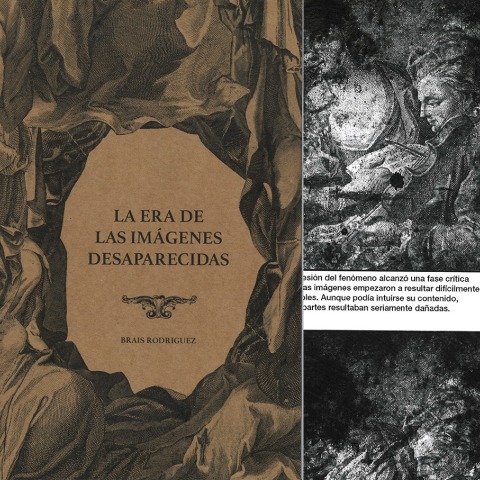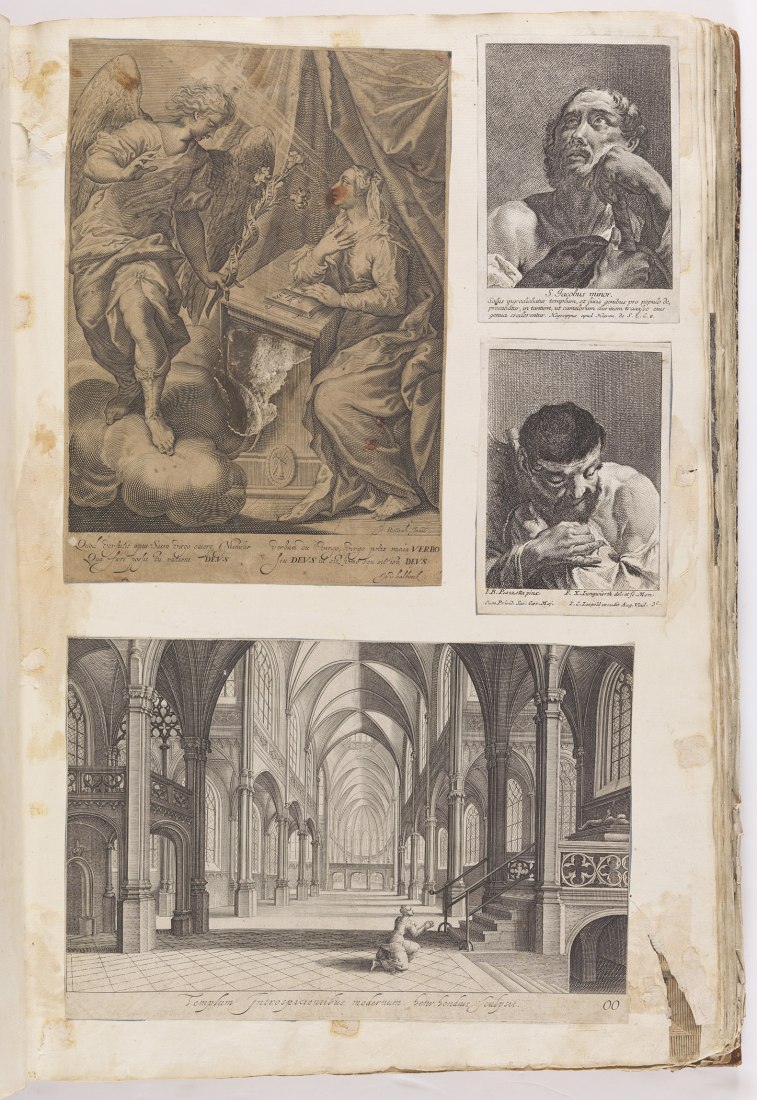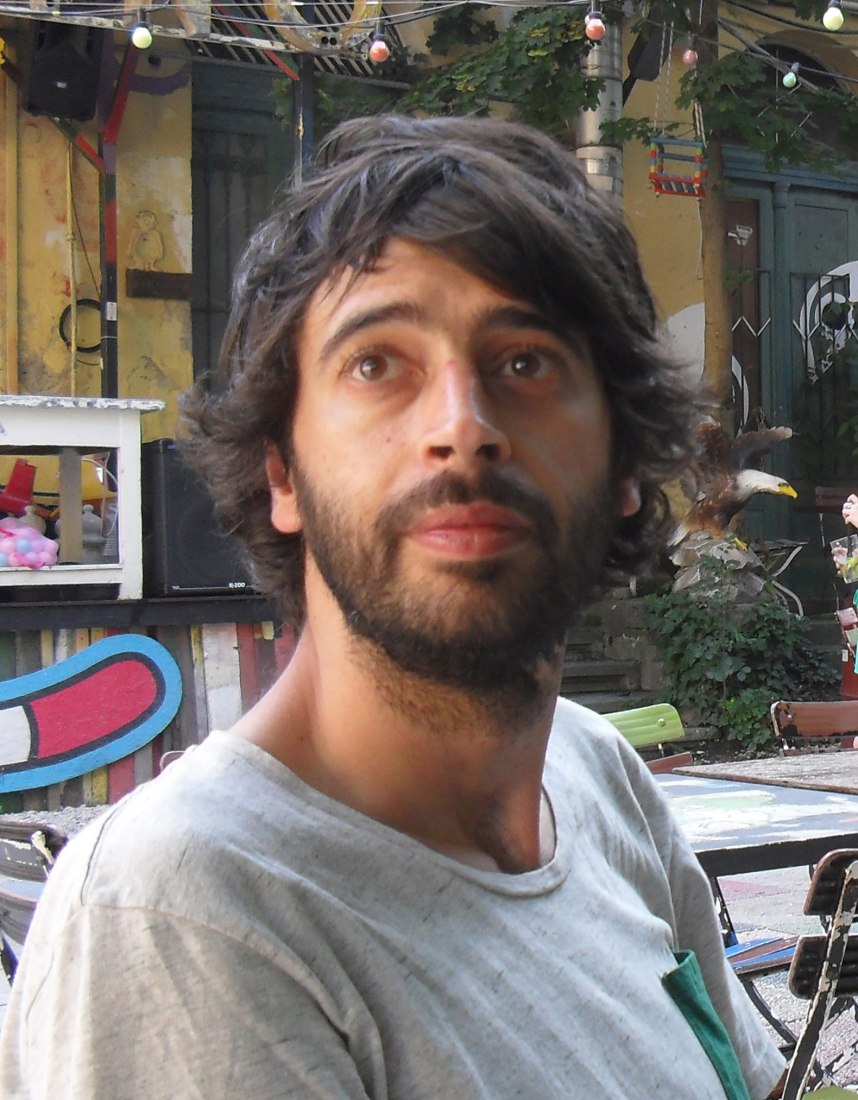Co-edited by Caylus Anticuario - from which the Prado National Museum bought in 2017 the so-called Brignardelli Album, which has led to the realization of this graphic history - and Liquid Meat, the name under which Brais Rodríguez self-publishes his fanzines, the National Museum del Prado, presents "The era of disappeared images", a graphic project promoted by the Area of Drawings and Prints, in which its author reflects on the value of images in society and the problems that their disappearance entails.
The fanzine, on sale physically at the Prado Store for € 3, can be downloaded for free in the online store here.
It was finished in December 2019 and its presentation was to coincide with the end of the exhibition El maestro de papel. Primers learn to draw from the seventeenth to the nineteenth centuries. But the pandemic truncated this possibility.
"This fanzine has become, without intending it, an allegory of the fears and risks that societies experience in the face of the unknown. The edition kept in boxes since December 2019, its late presentation two years later, symbolizes the light at the end of the dark tunnel that our society is going through."
José Manuel Matilla, Head of Conservation of Drawings and Prints of the Museo Nacional del Prado.
The fanzine is based on the Album of prints as models for artistic learning, collected by Juan Clemente Brignardelli (G-5922). It is a 114-page large-format album that gathers 420 prints, almost all of them engraved with burin or etching, from the 16th to the 18th centuries, from different European schools.
The state of conservation of the prints, deteriorated by their daily use at the Cádiz School of Drawing, of which Brignardelli was a professor at the end of the 18th century and the beginning of the 19th century, has been the starting point for the reflection raised by Brais Rodríguez . A review on the importance of images in society: on their iconic value as a means of expressing the ideas that power transmits through Governments, the Church ..., but also as a means of maintaining memory and memories. A look in which the author also reflects on the instability of societies and the violence that is triggered when ideological control mechanisms are altered.
Brais Rodríguez, develops a double facet as a comic author; on the one hand, the presentation of him as a meticulous draftsman, sometimes minimalist in character with vignettes in which he only draws black lines on white backgrounds. On the other hand, Brais makes use of numerous prints used as illustrations of the periodical press and 19th century literature, to decontextualize them, give them a different utility at the service of a new narrative, creating surreal situations and gripping atmospheres.

Album of prints as models for artistic learning, collected by Juan Clemente Brignardelli, last quarter of the 18th century
Etching and burin / laid paper, 535 x 375 mm
Point Dutch binding, leather spine with gilt irons and marbled paper covers. 115 sheets of laid paper with 420 stamps attached.
Cat. G-5922
Few data are known of Juan Clemente Brignardelli (? -1804), compiler and owner of this album of prints as recorded in the annotation with brown ink pen that appears on the front page of the guard "Book that belonged to Professor Brignardely who died in Cadiz 1804 // Contains this volume No. 1 602 490 [overwritten] stamps ".
In the Archives of the Academy of San Fernando there is an application from around 1794/5 signed by Brignardelli in which he appears as a second painting assistant at the Cádiz School of Drawing. In it, he asked to be awarded the title of Academic of Merit just by taking the test indicated by the San Fernando Academy in his city, as did Domingo Alvarez, director of the Cádiz School of Drawing, claiming to have many works of consideration to his charge and not being able to travel to Madrid. The request appears to have been denied. According to the annotation on the first page of the album, he died in 1804. Brignardelli must have had some more volume as evidenced by the need to number the volume on the spine and in the handwritten annotation of the cover.
Albums have been a common way of collecting prints and drawings since the 16th century. The assembly on the pages made it possible to establish an order in the collection, while guaranteeing its preservation by avoiding direct manipulation of works that, due to their material constitution, are highly fragile. In Spain, a country with little collecting tradition, few cases are known of this form of organization, although there are outstanding examples such as the collection of prints of Felipe II in El Escorial, or those of the Marqués del Carpio.
In the case of artists, it is known from post-mortem inventories that they possessed drawings and prints, sometimes kept loose or in albums. However, they have not reached us in such a state, as they have been frequent dismemberment and dispersal. In this sense, this Cadiz album is exceptional, in that it documents what was known only through the written word. It also makes it possible to verify the usefulness that drawing teachers conferred on the prints as a learning model. The poor general condition of the stamps, with numerous losses, breaks, bends and stains, are a good testimony to the fatigue caused by their use in the workshop. But, thanks to the fact that they were glued to the album sheets, their preservation has been possible.
The album originally contained 602 stamps, a figure that was later modified in the inscription to reduce it to 490. Today it only contains 420. It can be seen how some sheets were completely separated, in other cases stamps were detached, leaving traces of adhesive or paper. and in other cases they were directly cut.
The content of the album is very varied and it is not possible to determine a perfect order that obeys chronological, school or thematic criteria. Only occasionally are the prints grouped by subject, bringing together images with architectures, portraits, animals or landscapes. But in general, the arrangement of the prints on the pages obeys a criterion of economy, occupying the entire page without leaving any free gaps, adapting the works according to their size.
This organization suggests more than a pedagogical intention, a conservation intention to avoid the material loss of the prints. Variety is the main quality of the album, with numerous Italian, Flemish, German, French prints and to a lesser number Spanish. In them are present prominent authors such as Pietro Testa, Antonio Tempesta, Jan Sadeler, Jacques Belange and Manuel Salvador Carmona, among many others.
This album is part of the acquisitions policy of the Prado Museum focused on albums as a form of collection of works of art on paper, but also as a working instrument at the service of artists and scholars. It is also consistent with recent acquisitions focusing on the drawing primers that have been in use since the 16th century. Scattered throughout the pages of the album are at least six stamps that were part of these primers.
In the Archives of the Academy of San Fernando there is an application from around 1794/5 signed by Brignardelli in which he appears as a second painting assistant at the Cádiz School of Drawing. In it, he asked to be awarded the title of Academic of Merit just by taking the test indicated by the San Fernando Academy in his city, as did Domingo Alvarez, director of the Cádiz School of Drawing, claiming to have many works of consideration to his charge and not being able to travel to Madrid. The request appears to have been denied. According to the annotation on the first page of the album, he died in 1804. Brignardelli must have had some more volume as evidenced by the need to number the volume on the spine and in the handwritten annotation of the cover.
Albums have been a common way of collecting prints and drawings since the 16th century. The assembly on the pages made it possible to establish an order in the collection, while guaranteeing its preservation by avoiding direct manipulation of works that, due to their material constitution, are highly fragile. In Spain, a country with little collecting tradition, few cases are known of this form of organization, although there are outstanding examples such as the collection of prints of Felipe II in El Escorial, or those of the Marqués del Carpio.
In the case of artists, it is known from post-mortem inventories that they possessed drawings and prints, sometimes kept loose or in albums. However, they have not reached us in such a state, as they have been frequent dismemberment and dispersal. In this sense, this Cadiz album is exceptional, in that it documents what was known only through the written word. It also makes it possible to verify the usefulness that drawing teachers conferred on the prints as a learning model. The poor general condition of the stamps, with numerous losses, breaks, bends and stains, are a good testimony to the fatigue caused by their use in the workshop. But, thanks to the fact that they were glued to the album sheets, their preservation has been possible.
The album originally contained 602 stamps, a figure that was later modified in the inscription to reduce it to 490. Today it only contains 420. It can be seen how some sheets were completely separated, in other cases stamps were detached, leaving traces of adhesive or paper. and in other cases they were directly cut.
The content of the album is very varied and it is not possible to determine a perfect order that obeys chronological, school or thematic criteria. Only occasionally are the prints grouped by subject, bringing together images with architectures, portraits, animals or landscapes. But in general, the arrangement of the prints on the pages obeys a criterion of economy, occupying the entire page without leaving any free gaps, adapting the works according to their size.
This organization suggests more than a pedagogical intention, a conservation intention to avoid the material loss of the prints. Variety is the main quality of the album, with numerous Italian, Flemish, German, French prints and to a lesser number Spanish. In them are present prominent authors such as Pietro Testa, Antonio Tempesta, Jan Sadeler, Jacques Belange and Manuel Salvador Carmona, among many others.
This album is part of the acquisitions policy of the Prado Museum focused on albums as a form of collection of works of art on paper, but also as a working instrument at the service of artists and scholars. It is also consistent with recent acquisitions focusing on the drawing primers that have been in use since the 16th century. Scattered throughout the pages of the album are at least six stamps that were part of these primers.




























